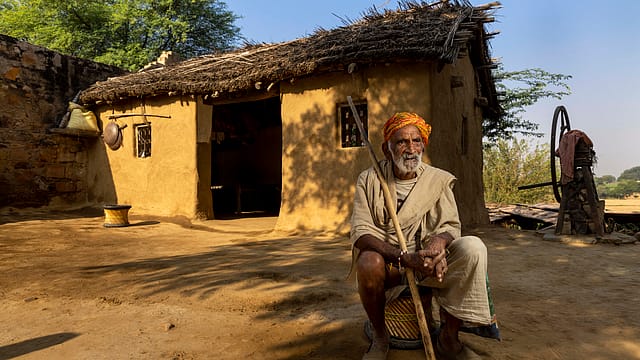Rural consumers becoming price sensitive: RBI
ADVERTISEMENT

Rural consumers are becoming increasingly price sensitive and switching to cheaper alternatives and smaller-sized packs, according to the Reserve Bank of India (RBI).
Non-food companies are tracking better in terms of rural volumes than food companies, partly owing to aggressive sales pitches by small and regional players, the central bank says in its November bulletin.
Rural demand accounts for a third of the revenues of consumer goods companies. Overall rural volume growth is estimated to have risen by 6.4% versus 10.2% in urban areas.
Fast-moving consumer goods sector companies (FMCG) registered moderate growth, mainly on account of their rural sales.
"Festival demand is ebullient. In urban areas, consumer appliances are in strong demand, especially in the mid- and premium segments. Consumer sentiment is upbeat," the central bank notes. Close to 80% of purchases of consumer durables are reported to be through consumer financing schemes spiced up with attractive equated monthly instalment (EMI) offers.
Entry-level segment demand is relatively subdued as "premiumisation" shows clear signs of developing into a consistent trend, the RBI says.
"In the affordable housing space, sales have declined, deterred by high interest rates, but surging growth is taking hold for houses in the ₹1-2 crore and ₹50 lakh-₹1crore segments. Festival spending and consumer exuberance are also driving record loan disbursements by non-banking financial companies (NBFCs)," the RBI says, adding nearly half of the credit demand is originating from Tier 3 cities.
January 2026
Netflix, which has been in India for a decade, has successfully struck a balance between high-class premium content and pricing that attracts a range of customers. Find out how the U.S. streaming giant evolved in India, plus an exclusive interview with CEO Ted Sarandos. Also read about the Best Investments for 2026, and how rising growth and easing inflation will come in handy for finance minister Nirmala Sitharaman as she prepares Budget 2026.
The momentum of the change in GDP is sequentially expected to be higher in the ongoing quarter, with festival demand remaining ebullient, the RBI says. Investment demand appears to be resilient with the government's infrastructure spending, an uptick in private capex, automation, digitalisation, and indigenisation providing a boost, the banking regulator says.
India's retail inflation fell to a five-month low of 4.9% in October from the average of 6.7% in 2022-23 and 7.1% in July-August 2023.
"We are not out of the woods yet and have miles to go, but readings of around 5 per cent and 4.9 per cent in September and October, respectively, are a welcome relief from the average of 6.7 per cent in 2022-23 and 7.1 per cent in July-August 2023," it says.
India's external sector has remained viable, with a modest current account deficit (CAD) financed by resilient capital flows, one of the least volatile currencies in the world and a healthy level of foreign exchange reserves.
The RBI bulletin, however, warns the global economy shows signs of slowing down in the final quarter of 2023 as manufacturing languishes while services sector activity appears to have reached the end of its post-pandemic expansion.
Going forward, tightening financial conditions is a significant risk to the global outlook, it says "Europe appears to be on the edge of recession, China is stalling. The US has emerged as a key driver of global growth although its outlook is more uncertain now than before as it swings from hard landing to soft landing to no landing," the RBI cautions.
